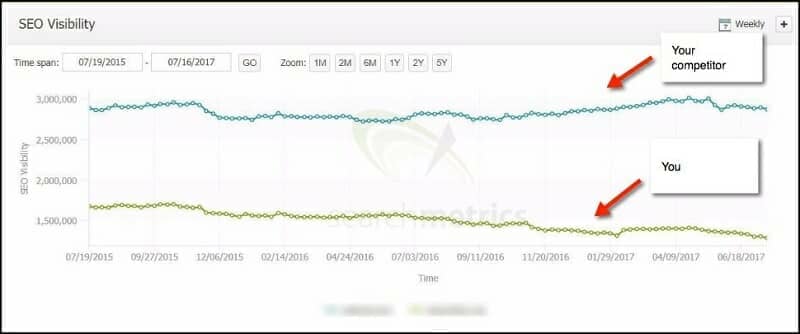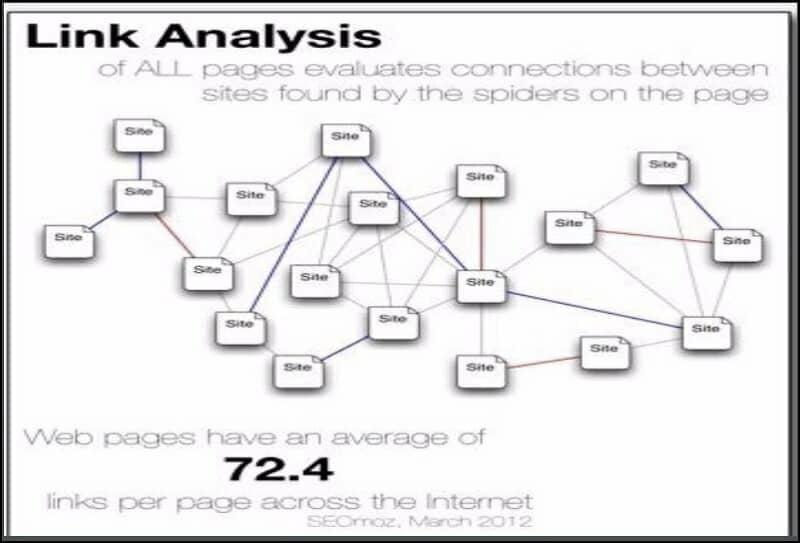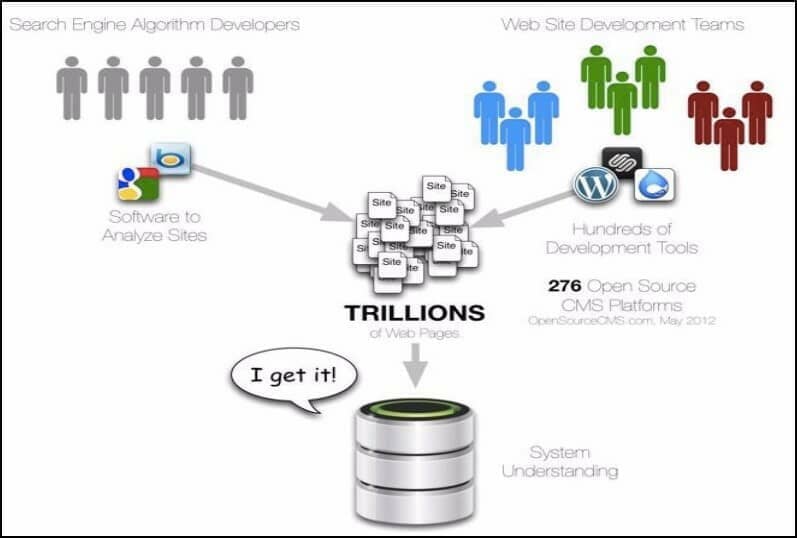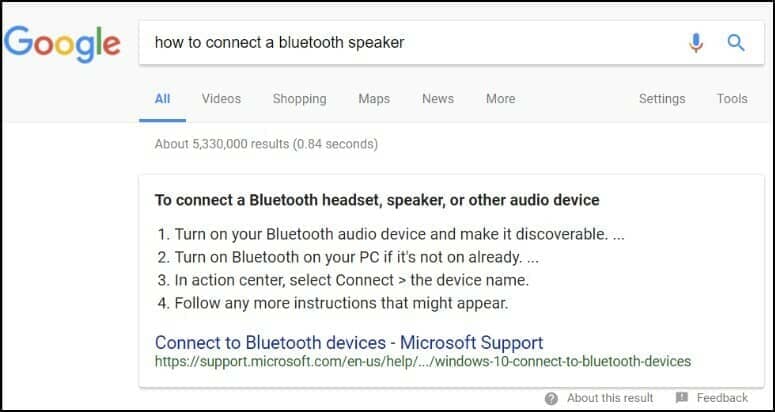Most senior executives in large enterprises have many tradeoffs to make when allocating budget. There are so many priorities to be addressed, such as organizational needs, infrastructure improvements, this quarter’s revenue, next quarter’s revenue and so on. How does SEO fit into that complex mix of priorities?
Further, many senior executives assume that Google should be able to figure out their site and that’s all there is to it. But, it turns out that it’s a much more complicated situation than that, and Google has some pretty severe limitations.
Why Enterprise SEO Matters
Enterprise SEO matters because there is an enormous amount of revenue to be obtained from organic search, and if you don’t do SEO the right way, then you’re probably missing out on a substantial portion of the opportunity that organic search represents for your business.
[Tweet “Enterprise SEO matters because huge revenue is possible from organic search. More at”]
Chances are, your competitors are actively doing SEO, at least some of them, and they’re effectively getting a strong competitive advantage by engaging in SEO—especially if you’re not doing SEO or they’re just doing it fundamentally better than you.

And so, that’s why it matters: There’s a lot of money at stake. Further, because SEO tends to be a high-margin activity, it’s not just lost incremental revenue that we’re talking about, but it’s lost incremental profit.
Next, I’ll talk about the basic requirements of doing SEO well in Google, the search engine’s limitations, and how it deals with the massive undertaking of serving up the best content in the web from trillions of web pages—and why all this matters to an enterprise SEO strategy.
Basic Requirements to Set Up Your Site for SEO Success
- You have to structure your website in a way that Google can find and understand your content. This isn’t as easy as most people assume. And it turns out that there are many ways that your development team might be doing things on your website that would make it very difficult for Google to actually find and discover your content. If it can’t find and discover your content, then your content has no chance of ranking. So, you might end up creating many web pages with a lot of really valuable information on them, but Google won’t know about it, so it won’t show up in the Google Search results. For more on this, please see our articles on How Google Crawls and Indexes Web Sites, and Basic Site Structural Choices.
- You have to produce great content. In theory, you can think of your web content as being graded with a score by Google, taking into account many factors. How does Google define great content? The safest approach to creating great content is to focus on content that is good for the users who visit the pages of your site.
- You have to attract attention to your site. What many people don’t understand is that Google uses links to your website as a voting system to help it decide why your content is better than competing pieces of content that cover the same topics. You can learn more about PageRank, Google’s method of calculating the relative value of web pages using links, here.
So that’s the landscape at a very high level for performing SEO in order to compete in the search engine results pages.
[Tweet “Winning #SEO = correct site structure + great content + good links. More at”]
Understanding Google’s Biggest Challenges
Remember I said earlier that many executives think they can put up a site and Google can just figure it out? Let’s explore just how monstrous the task is that Google has when it comes to indexing and serving up sites in its search results.
The task is so big, in fact, that I have often referred to the Google Search engine as being the most impressive technological achievement in the history of mankind. Let me explain. First of all, there are hundreds of trillions of pages on the web today, and it’s a truly massive undertaking for the Google Search engine to visit all of those pages. How big is it? Google says they know about more than 130 trillion pages on the web. My guess is that there are, in fact, many hundreds of trillions of pages out there today.
The search engine visits web pages using what we call a web “spider,” “crawler” or “robot” that mechanically follows all the links that it can find on the web to discover new web pages. Just the simple act of visiting all those pages is a massive accomplishment in and of itself.
And then, after having visited all those pages, it does a semantic analysis of the content. So, it actually parses the content to figure out what it’s all about. (See our article on crawling, indexing and ranking for more.)
Consider that the average page size today is about 900 kilobytes, and multiply that by the hundreds of trillions of web pages out there, and you can start to see how massive Google’s job is.
Just to give you something to compare it to, if you were to try to download the entire web on your cable modem, it would take you millions of years. So that gives you some idea of scope, but that’s not even really the end of the story.
The next major point is that there are millions of different approaches people use for building web pages. There are different content management systems, different development platforms, different programming languages.
Website development teams and designers make decisions in very different ways, and Google has to be able to sort through all that to actually find the content on the pages and understand what it’s about.
And then on top of that, Google does a map of how all the pages on the web link to one other, and what that interlinking looks like.
Remember when I mentioned that Google uses links from one web page to another, particularly when it’s from one site to a page on another site, as votes for determining the most important content?
Well, Google can only do that if it builds and keeps a complete map of all the interlinking of all the web pages across the entire web.

So, when Google is done with all of this, it takes all of that information and it throws it into a large-scale database (which by the way, Google distributes in many different places across the planet), and it accepts an arbitrary search query of anything a user chooses to type into a search box from anywhere on planet earth, and then Google responds with a good answer in four-tenths of a second or less.
Wow.

How Google Makes Its Job Easier
So, Google has this absolutely massive program, database and “big data” tasks it has to complete, and with that comes the fact that Google takes some shortcuts. These shortcuts are important to know for your enterprise SEO.
How Google Handles Trillions of Web Pages
There is some interesting data out there that suggest that Google doesn’t necessarily crawl all of the content on your web pages. I think some of that data is a bit dated, and Google is actually crawling more and more of most pages.
One of the shortcuts that Google might take, however, is that the spiders might actually visit a web page, or “crawl it,” but the search engine might just drop it from the index because it thinks it’s unimportant. The content may be something that would never rank very high for any of the queries anyway.
Another shortcut is that there may be pages that are seen by the crawlers, but the crawlers don’t visit them because they’ve already made the judgment that based on the way they’re linked to on the web, that they’re not worth adding to their index.
And then, of course, there can be pages that they actually never even see, and that can happen if pages are created that have no links to them at all (or if they are only linked to other pages that Google knows about, but has not bothered to visit).
How Google Handles Images and Video
The Google Search engine doesn’t actually attempt to process all the content on a web page and images are a part of that. In fact, as far as we know, it doesn’t even parse the text within images today.
It turns out the technology to do that kind of stuff has been around for decades. It’s called optical character recognition, or OCR, but Google doesn’t do it because it can’t add that extra layer of programming complexity on top of everything that it’s already doing.
So, the best way for Google to learn about what’s in your images is by seeing the text around it, the image file name and alt text for your image if you use it. They use that instead of taking on the programming task of reading every aspect of it.
And similarly with videos, Google has the same issue of only having a limited view as to what the video is about.
So, that’s some backdrop on the challenges that Google faces, and some shortcuts it takes. Let’s next talk a little bit about some other SEO factors an enterprise needs to consider.
The Google Algorithm is Constantly Changing
On top of understanding basic requirements for succeeding in search, you have to keep up with all the changes that Google makes every year. Google’s algorithm is constantly evolving. Just in the past year, Google has announced some very significant things, in fact.
Here are some examples:
One big announcement that came in 2016 was Google’s “mobile first” indexing. The driving factor behind this announcement is that Google has seen what we all have been seeing, that most sites get more of their visitors from mobile devices than desktop devices. The mobile first index, expected to happen sometime in 2018, means the Google Search engine will base its understanding of your website on the mobile version of your site more than the desktop version of your site to determine what the content on the page is about.
In May 2017, Google reminded website publishers of the actions it’s taking to deal with what they consider spammy link-building practices.
And in June 2017, Google 2017, Google alluded to the fact that it was expanding what we call “featured snippets.” Featured snippets occur when Google extracts information from websites to directly answer a user’s query in a “box” placed in Position Zero–above the first position in the search results.

So, those are just a few examples of the many announcements of changes in Google, all of which impact enterprise SEO.
Do the Wrong Thing and Google Can Penalize You
In the past, we’ve seen some very public cases of Google penalization with sites that have violated Google’s Webmaster Guidelines. Take, for example, Overstock, JCPenney and BMW Germany, to name a few.
The same types of penalties can happen to any enterprise website that runs afoul of Google’s Webmaster Guidelines.
Key Takeaways for Enterprise SEO
To summarize, enterprises today need an enterprise SEO team because:
- Google has major limitations. It’s easy to create content that Google can’t understand. You can create pages it only partially reads or that it never examines. You can also create content that Google believes is poor quality, so it’s ignored.
- The search environment is constantly changing. I shared some examples of the ways that Google’s algorithm is evolving, but it’s much more than that. There’s far more that it has done in the past year than just those few announcements.
- If you do the wrong thing, you can be penalized by Google and removed from the search results. If brands like BMW and Overstock can be penalized, you can, too.
- There is a significant amount of upside to your business by doing SEO well. SEO is a high-ROI investment. When you invest in SEO, you obtain that extra traffic, visibility, and revenue for your business from Google.


